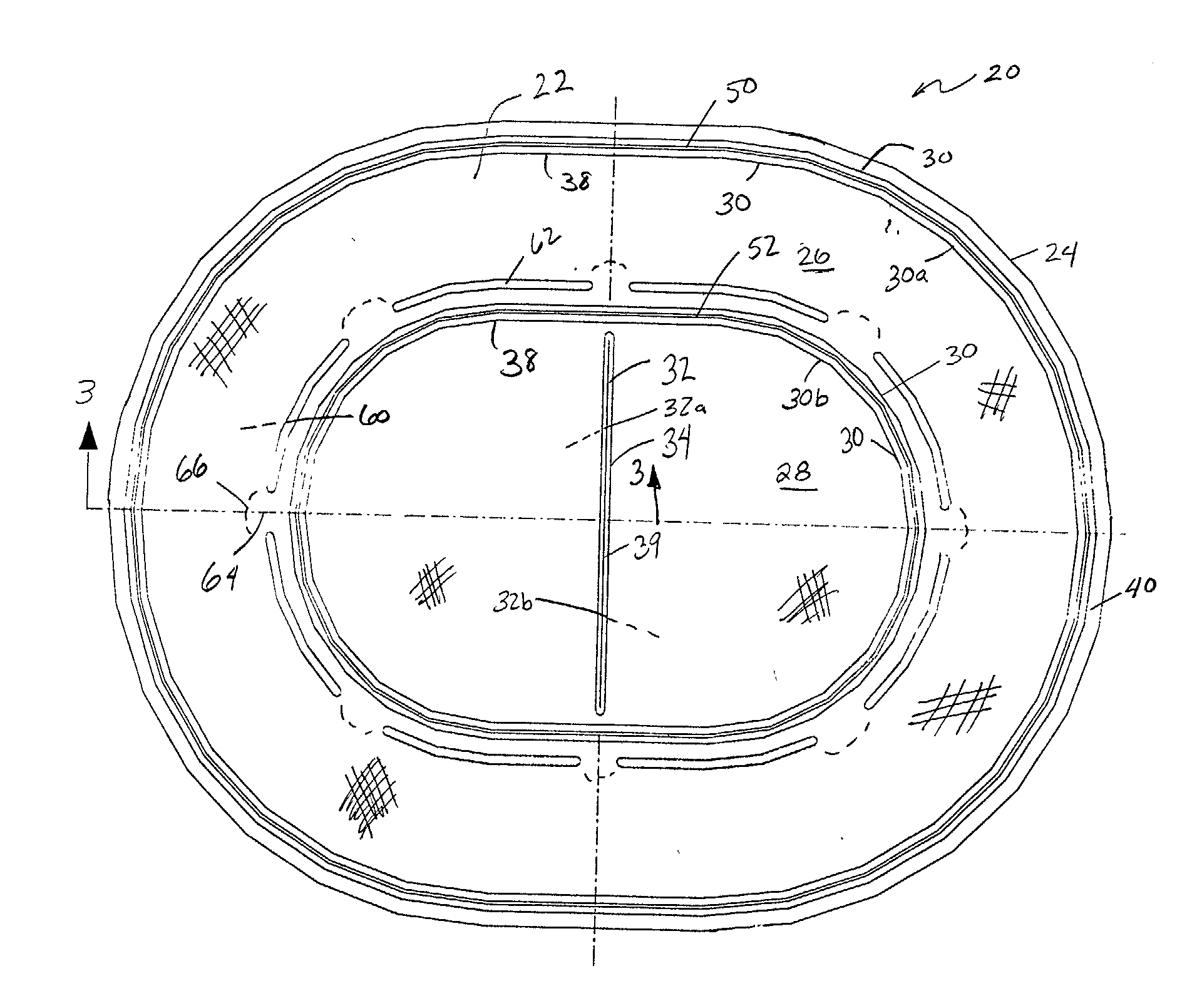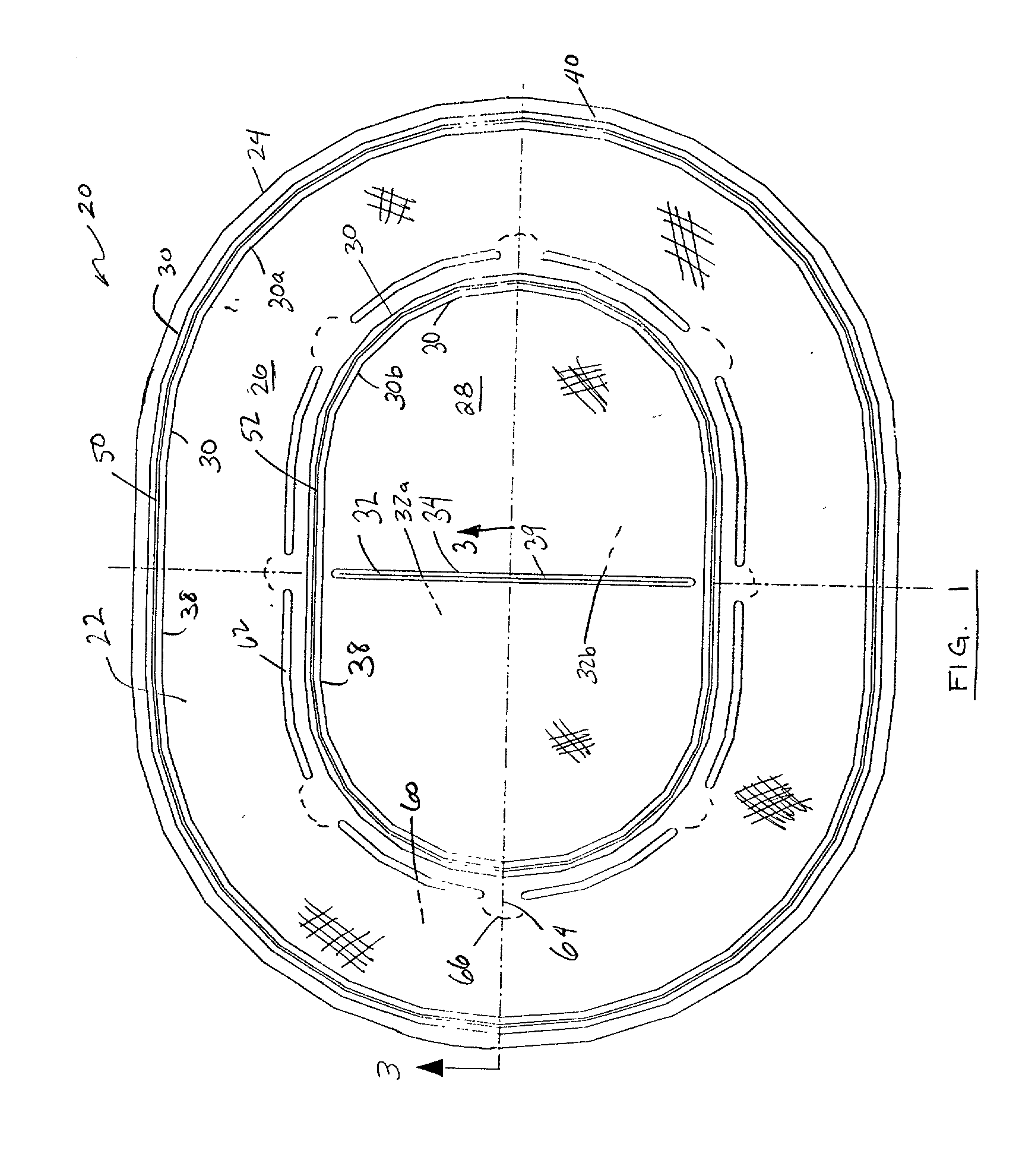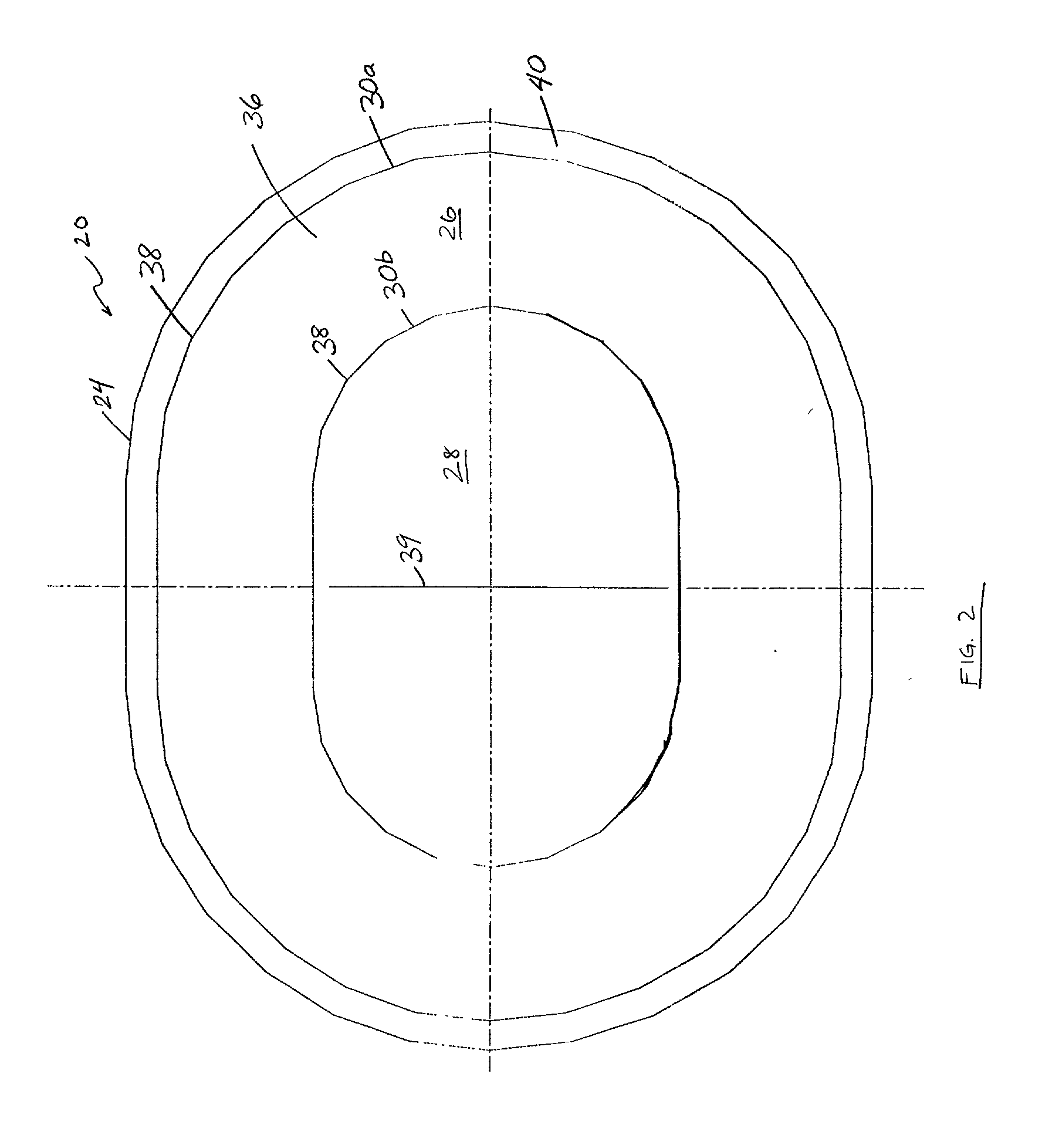Implantable prosthesis
a prosthesis and implant technology, applied in the field of implantable prosthesis, can solve the problems of unsatisfactory postoperative adhesion, influence of wound healing, and undesirable tissue attachment between the mesh and the tissue or organ,
- Summary
- Abstract
- Description
- Claims
- Application Information
AI Technical Summary
Problems solved by technology
Method used
Image
Examples
Embodiment Construction
[0026] An implantable prosthesis for an anatomical defect, such as a tissue or muscle defect, that promotes tissue or muscle growth into the prosthesis and subsequently strengthens the area of the defect is provided. The incidence of postoperative adhesions between a portion of the prosthesis and surrounding tissue or organs may be minimized. The prosthesis is easy to manipulate and properly deploy in the area of desired coverage (e.g., over, under or within the defect). In addition, the prosthesis is constructed to allow it to be provisionally held in place until sufficient tissue or muscle ingrowth occurs, without compromising the integrity or strength of the prosthesis. To achieve these and other attributes, the prosthesis includes various features, each of which will be described in greater detail below, that may be employed singularly or in any suitable combination.
[0027] FIGS. 1-7 illustrate embodiments of such an implantable prosthesis for correcting soft tissue or muscle def...
PUM
 Login to View More
Login to View More Abstract
Description
Claims
Application Information
 Login to View More
Login to View More - R&D
- Intellectual Property
- Life Sciences
- Materials
- Tech Scout
- Unparalleled Data Quality
- Higher Quality Content
- 60% Fewer Hallucinations
Browse by: Latest US Patents, China's latest patents, Technical Efficacy Thesaurus, Application Domain, Technology Topic, Popular Technical Reports.
© 2025 PatSnap. All rights reserved.Legal|Privacy policy|Modern Slavery Act Transparency Statement|Sitemap|About US| Contact US: help@patsnap.com



